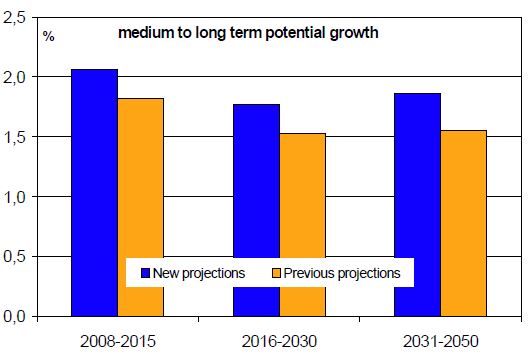Trésor-Economics No. 2 - Estimates of French medium to long-term potential growth revisited
INSEE recently published new projections of the French working population to 2050. According to these estimates, the number of people in the labour force would continue to rise till 2015 then stabilise at between 28.2 and 28.5 million, whereas in earlier calculations, the labour force was projected to decline as from 2007. This dynamism stems from increased fertility, more abundant immigration, and higher activity rates, in the 60-64 age group notably, as a result of the pension reform.
These new projections have led to an upward revision of the labour force growth rate and hence the economy’s growth potential. The latter has been revised upward by more than a quarter of a percentage point relative to the previous estimate. Adopting conservative assumptions regarding capital accumulation and assuming unchanged legislations, potential growth would work out to 2.1% per year for the medium term (2008-2015), 1.8% per year over the period 2015-2030, and 1.9% over the very long term (2030-2050).
These revised projections – of population, working population and growth potential – have three consequences: first, the total population looking to 2050 would be relatively younger than previously thought, since the proportion of under 15s in the total population would be in the region of 17% (very close to the current figure of 19%); the ratio of working to non-working people aged over 60 is set to decline, but slightly less than previously expected (from 2.2 now to 1.4 by 2050); per capita wealth is set to rise relative to previous projections as from 2025, when the additional fertility would boost the size of the working population.
